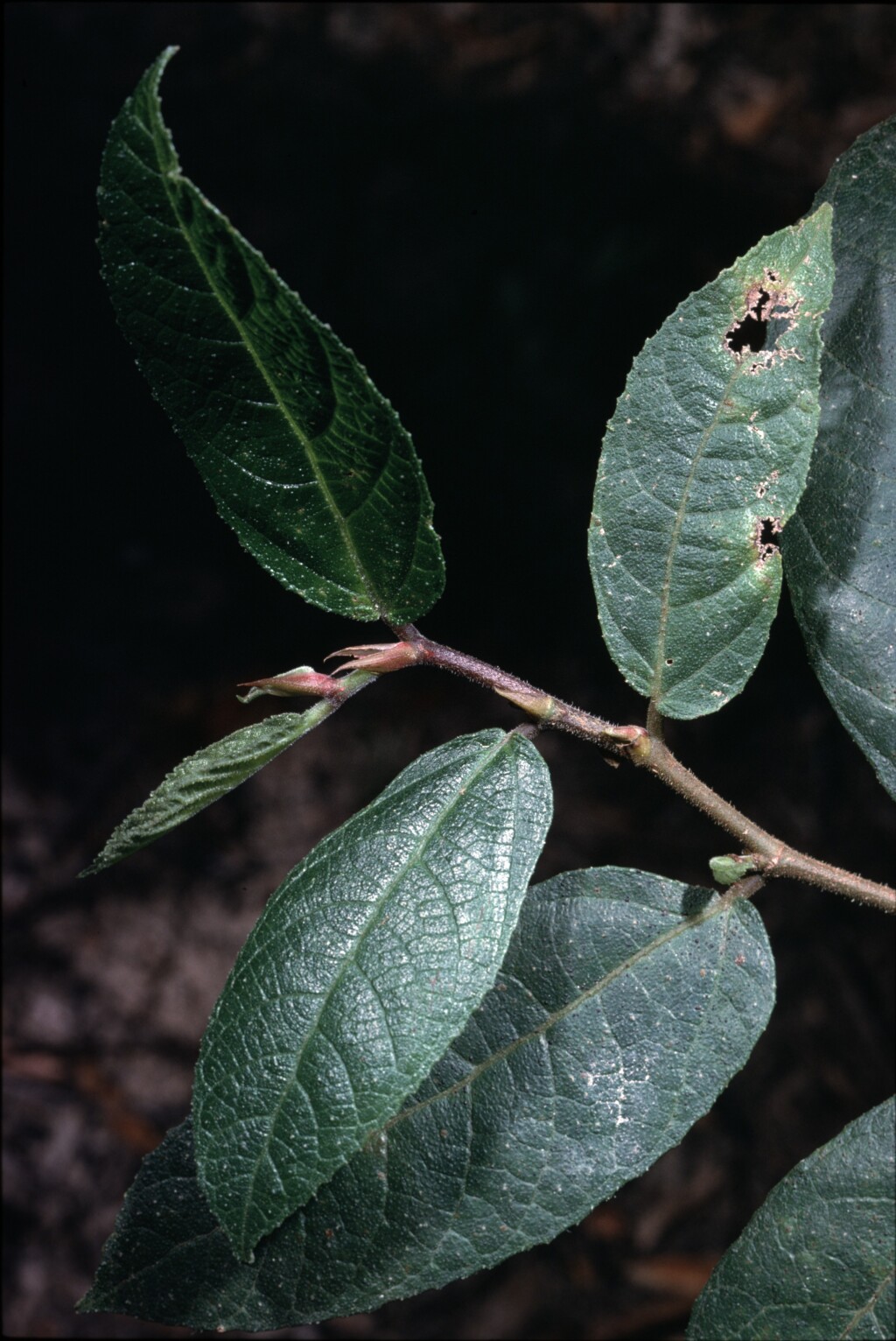Ficus
Evergreen or deciduous trees or shrubs. Leaves entire or palmately lobed, usually petiolate; glands often present on underside of leaves, in axils of veins or apex of petiole. Inflorescence (fig) urceolate, axillary or sometimes on trunk and major branches; flowers compact, axis of inflorescence invaginated to form a hollow, fleshy receptacle with small bracts surrounding an apical orifice (osteole). Flowers small; perianth segments 1–5, or absent. Male flowers with 1–8 stamens; anthers mucronate, introrse; pistillode usually absent. Female flowers with sessile or stalked, unilocular ovary; stigma bifid or simple; ovule 1. Sterile flowers usually present, similar to female flowers but with shorter style; ovary commonly infected by the fig-wasp and becoming swollen with developing larva. Fruit an achene, enclosed in enlarged receptacle.
About 1000 species throughout tropical and warm-temperate regions; 48 species in Australia (3 naturalised).
Two commonly grown figs have become invasive in Victoria. A third species, Ficus pumila L. (Climbing or Creeping Fig), from Japan and China, is a closely adhering climber with adventitious roots which has already become naturalised in Queensland and New South Wales. Although popular as a covering for walls and stonework in Victoria, it has thus far remained domesticated.
Entwisle, T.J. (1996). Moraceae. In: Walsh, N.G.; Entwisle, T.J., Flora of Victoria Vol. 3, Dicotyledons Winteraceae to Myrtaceae, pp. 80–81. Inkata Press, Melbourne.
 Spinning
Spinning



